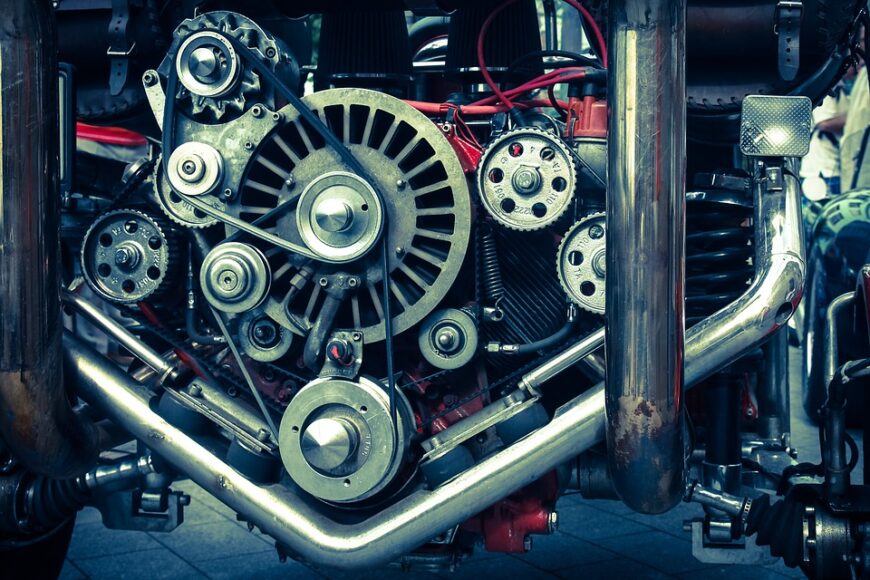- August 15, 2019
- By Park Muffler
- In Belts, Blog
What is a Serpentine Belt?

A serpentine belt is a single continuous belt that works to drive multiple functions of your vehicle. It drives the alternator as well as powers the steering pump, water pump, air conditioning compressor, air pump and more.
It is named after its long and winding appearance and can be located at the side of the engine.
The serpentine belt is driven by the crankshaft, which is the component of your vehicle’s engine that changes the up and down motion of the pistons into rotations.
Your Vehicle’s Other Belts
Depending on the age and model of your car, the serpentine belt may not be the only belt driving the various components of your vehicle. Most vehicles also have a timing belt, which also works with the crankshaft (as well as the camshaft) to synchronize the crankshaft’s production of rotational movements with the camshaft’s control of the inlet and exhaust valves.
The two are often confused, but where the serpentine belt is uncovered and ribbed, the timing belt is covered by a small plastic cover and features a more “toothed” appearance.
Damaged or Broken Serpentine Belt
Driving with a broken serpentine belt can be detrimental and cause serious and costly damage to your vehicle.
Without a functioning serpentine belt, the water pump will fail and cause your vehicle to overheat. Allowing the vehicle to run in an overheated state can cause serious issues such as warped cylinder heads, a blown head gasket, melted engine components and damage to the exhaust system.
A damaged serpentine belt will also affect the power steering system, since the belt drives the power steering pump. Your vehicle will become extremely difficult to steer.
Electrical accessories, such as the battery, will cease to function since the serpentine belt drives the alternator. Everything electrical, such as your radio, air blowers and lights, will continue to work until the battery runs out of charge.
Symptoms of a Bad Serpentine Belt
A squealing or chirping sound from the front end of your vehicle is a good indication that your serpentine belt is wearing down or worn out. A slapping or knocking sound may be the symptom of a slipped or broken belt.
Apart from strange noises, you can easily do a visual inspection of your serpentine belt in order to determine its condition.
Checking the Serpentine Belt
The serpentine belt is an uncovered belt located at the side of the engine. It is a long belt with a smooth outer surface and a grooved or “ribbed” inner surface.
Once you find your vehicle’s serpentine belt, do a visual inspection. Look for cracks, missing chunks of rubber, abrasions, rib separation, uneven rib wear and damaged ribs.
New serpentine belts are soft with a felt-like surface on the ribbed side. As the belt wears down, the rubber begins to harden and crack. Once the belt is completely worn out, it will stretch and lose tension which will cause the belt to start slipping.
Pay attention to any cracks or frays on the belt. These may cause the serpentine belt to become misaligned or contaminated with fluid.
Replacing the Serpentine Belt
Your vehicle’s serpentine belt should be inspected at least once a year. While a visual checkup yourself is a great way to keep track of the belt’s condition, a licensed mechanic should have a look at it on a yearly basis.
In areas where annual inspections are mandatory, and in provinces that require Out of Province Vehicle Inspections, the condition of the serpentine belt will be checked. If there are any issues with the serpentine belt, you may have to repair it in order to pass the inspection.
Serpentine belts should last up to 5 years or 100 000 km. If you own an older or used vehicle, check its service records to see when if the serpentine belt has been replaced in the past.
Have your serpentine belt inspected today! Contact our professional team of mechanics for more information.
© Park Muffler - All Rights Reserved.

